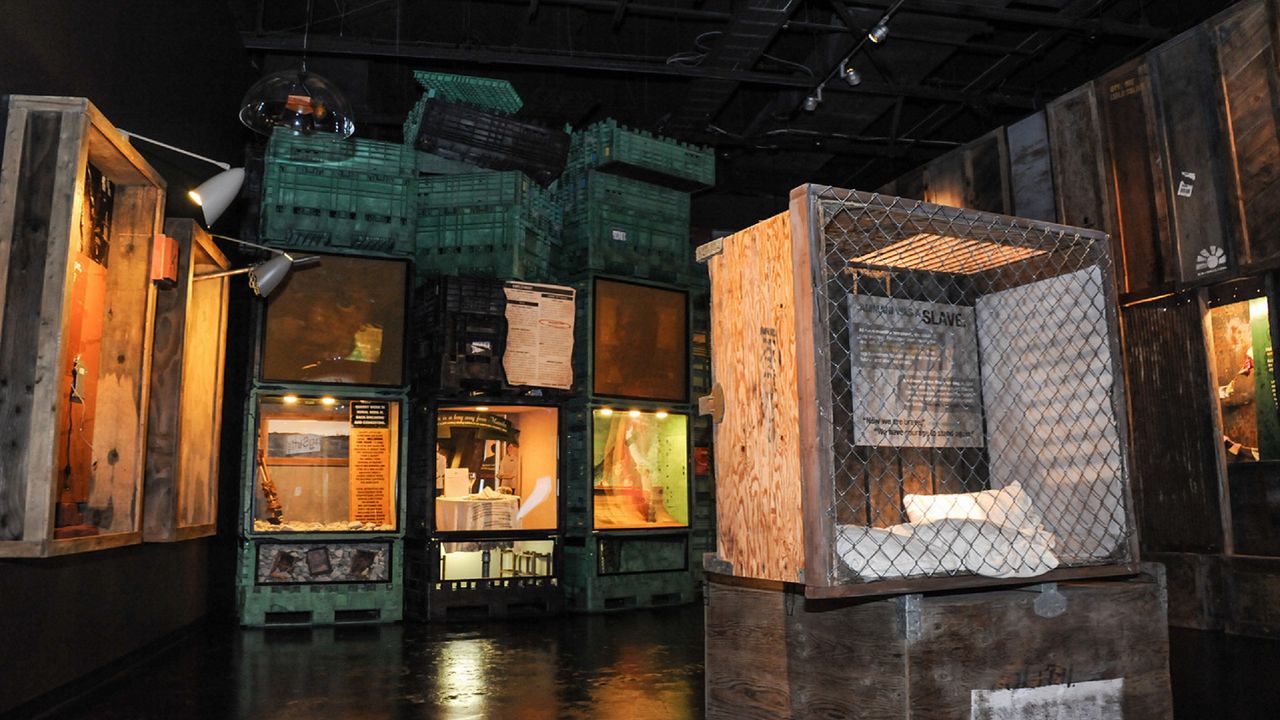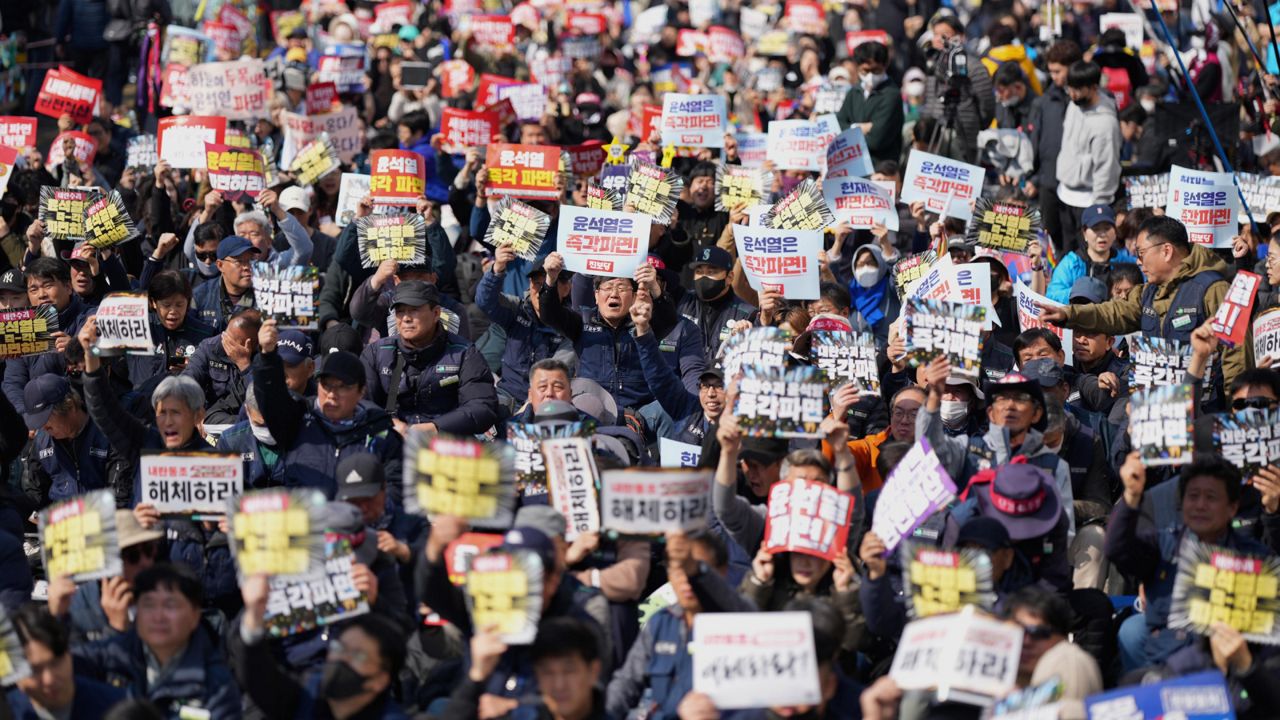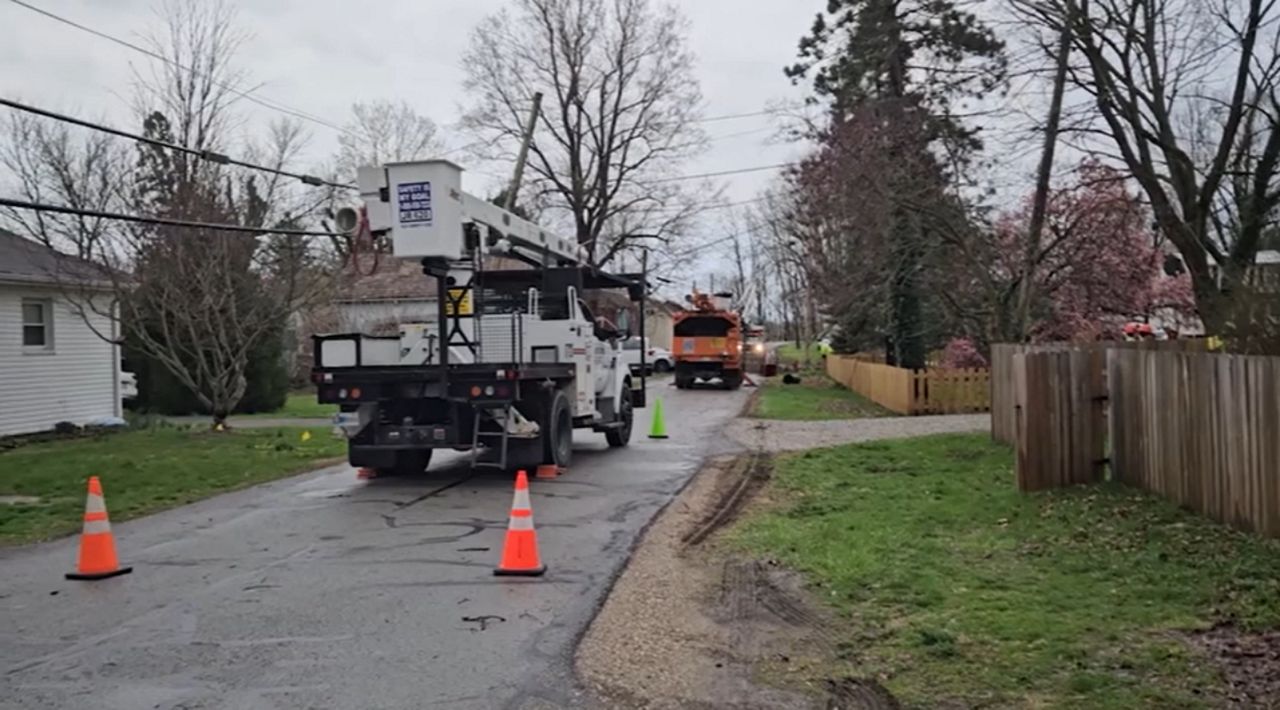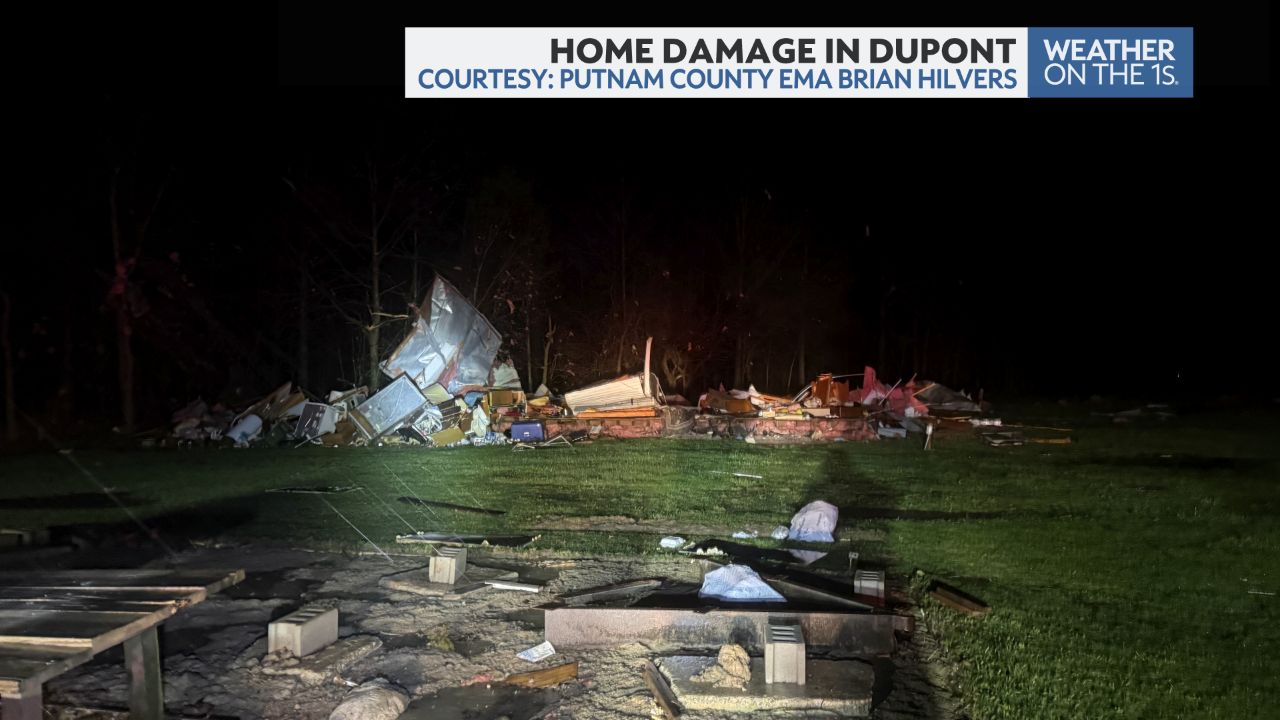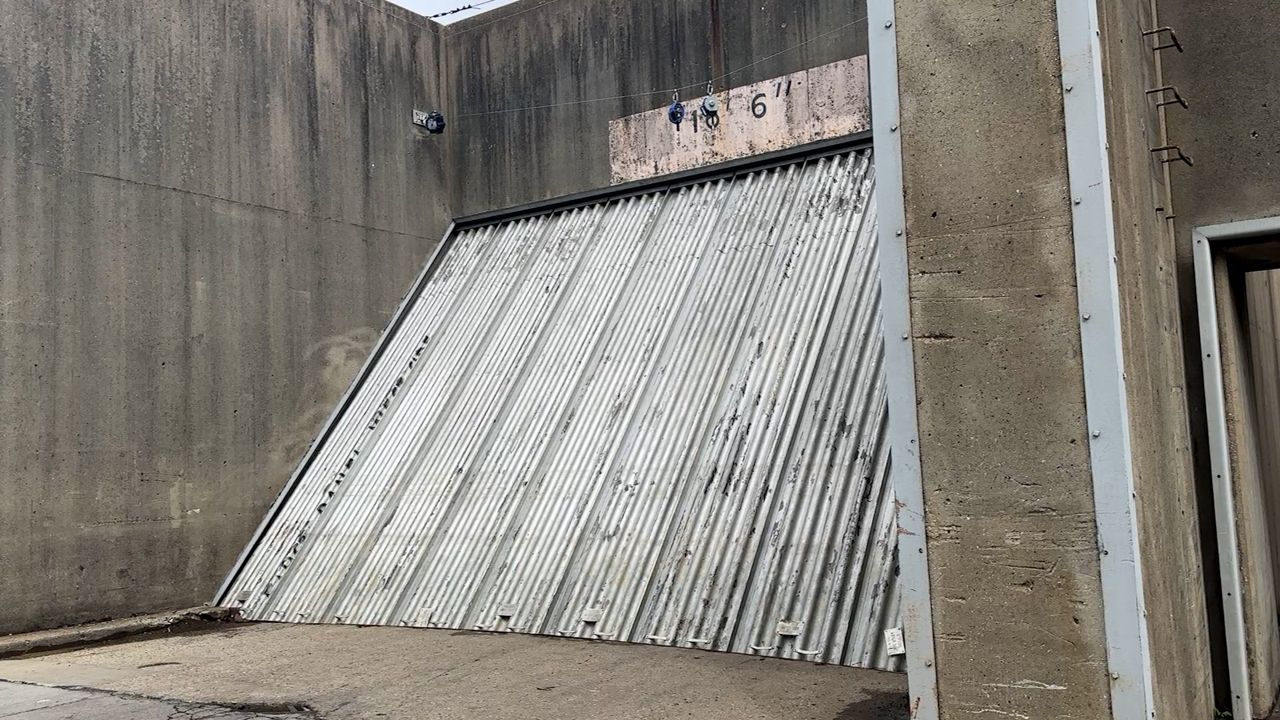CINCINNATI — The issue of slavery or human trafficking is much closer to home than many people may realize.
What You Need To Know
- The National Underground Railroad Freedom Center is opening a new exhibit dedicated to addressing human trafficking in Ohio
- 'Shine a Light' is an interactive gallery with pieces focusing on various aspects of human trafficking
- Ohio is No. 4 in the country for incidents of human trafficking, according to Polaris
- The exhibit opens on Nov. 9
Today, human trafficking — a form of modern-day slavery — is happening most days in cities and neighborhoods around the country, even in Cincinnati.
Ohio ranks fourth in the nation in human-trafficking cases in the country, with hundreds of cases reported every year — with many more going unreported, according to Polaris, which operates the National Human Trafficking Hotline.
To help address the issue, the National Underground Railroad Freedom Center in downtown Cincinnati is opening a new exhibit to shine a literal light on the ugly underbelly of this oft-overlooked reality taking place in areas throughout the state.
The new “Shine a Light” exhibit opens inside the museum’s "Invisible: Slavery Today" gallery on Wednesday, Nov. 9.
“Human trafficking is a nefarious and dangerously misunderstood, under-reported threat to freedom” said Woodrow Keown, Jr., the Freedom Center’s president and COO. “We hope [this] experience will engage guests to learn more about human trafficking so they can be vigilant, identify cases when they see them and act to save lives and liberate survivors.”
‘Shining a Light’ on a timeless wrong
“Shine a Light” is an interactive experience that invites guests to explore a city-like streetscape — complete with everyday features such as business storefronts, bus stops and telephone. The goal is to teach visitors about the often ordinary-looking nature of human trafficking, Keown said.
Those walking through the “Shine a Light” will use an actual flashlight to reveal factoids about human trafficking in Ohio hidden throughout the gallery space.
The exhibit features details about trafficking stories — where they’re from, when they were first trafficked and the circumstances that led to them being trafficked. It also includes audio recordings of survivors describing their experiences. There are four character vignettes in total.
Additional displays include information about specific forms of trafficking and the numbers behind them.
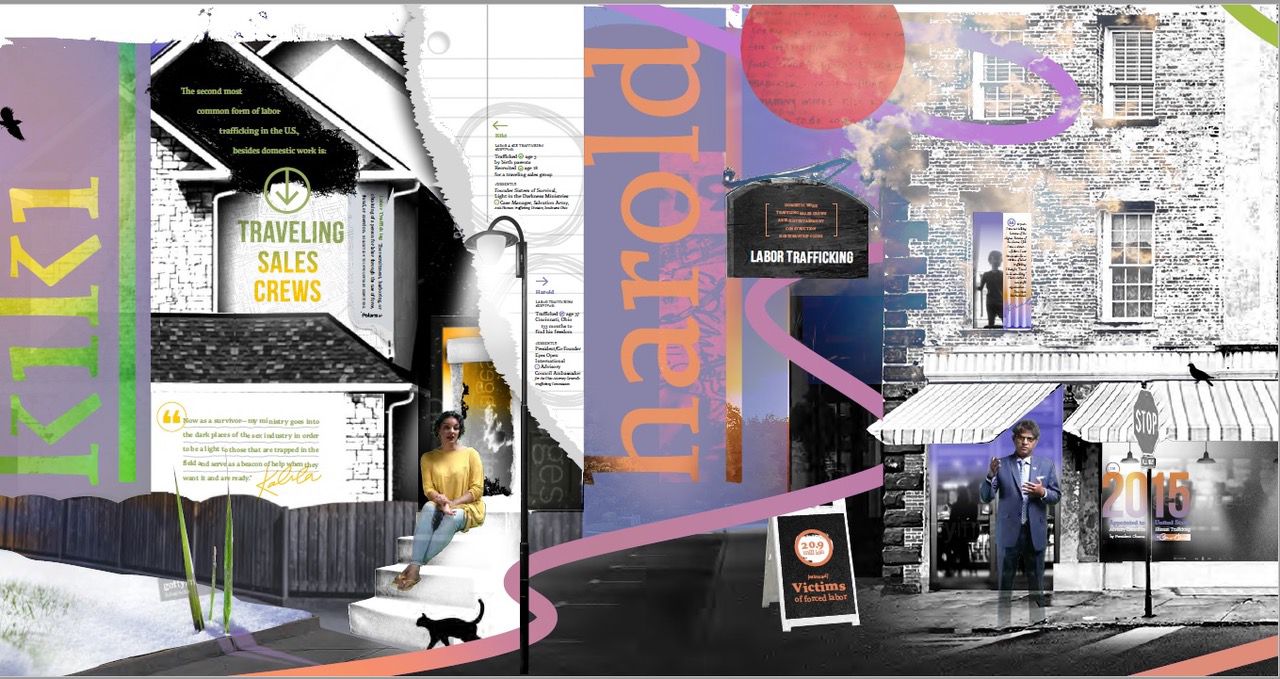
For instance, on the federal level, 97% of the criminal human trafficking cases in Ohio are sex trafficking. The second most common form of labor trafficking in the U.S., after domestic work, is traveling sales crews.
The “Shine a Light” experience builds on the Freedom Center’s decade-old “Invisible: Slavery Today” exhibit.
When it opened in 2010, it was the world’s first permanent museum exhibit on the subjects of modern-day slavery and human trafficking.
“Invisible: Slavery Today” looks and feels like a dingy warehouse in an unfamiliar city. It’s filled with wood, metal and plastic containers, the likes of which are often used for shipping human beings.
Information on forms of modern-day slavery, including forced labor, bonded indenture, child slavery, sex trafficking and domestic servitude. Statistics are tacked onto the trunk of a car.
“Invisible: Slavery Today” also examines the response of governments, the justice system and the public.
The Freedom Center partners with the "End Slavery Now" initiative to combat human trafficking and modern-day slavery. End Slavery Now provides education, resources, contacts and ways for individuals to act to end modern-day slavery.
Sara Donato, who manages "End Slavery Now," recalled walking through the Freedom Center shortly after starting her job there back in February 2021. She entered the "Invisible Slavery" area and “just kind of walked past it” because she didn’t think that type of thing was happening in Ohio or elsewhere in the U.S.
"Through this process I've learned it can truly happen to anyone and anywhere," she said.
The "Shine a Light" exhibit update aims to showcase that human trafficking can take place anywhere, Keown said. He noted Cincinnati’s location along busy shipping corridors along Interstates 71 and 75, and the major sporting events and concerts in the city’s area.
“Awareness is really the biggest factor in helping to identify human trafficking,” he added. “You may pass places where exploitation is happening and unless you recognize the signs and unless you can understand the complexities of how it happens, it will not change.”
It can and does happen right here
Tony Talbott, director of Advocacy for the Human Rights Center at the University of Dayton, believes people are much more aware of human trafficking than when he first started working on the issue in 2009. But he said it’s also just as misunderstood.
U.S. law defines human trafficking as the use of force, fraud or coercion to compel a person into commercial sex acts or labor against their will. The presence of a trafficker and those elements of force, fraud or coercion is the key difference between sex/labor trafficking situations and sex work/labor exploitation.
Anyone under the age of 18 who is having sex for money or for something of value is considered a victim of trafficking.
There were 2,813 cases of human trafficking cases reported in the state between 2007 and 2020, per data from Polaris. That includes 310 in 2020 alone.
Police Officer Lisa Johnson, with the Cincinnati Police Department, doesn’t put much stock in those numbers because they only tell a part of the story.
“Those are the ones we just catch and people tell us about,” she said. “Whether the figure is low or high, they’re not really showing the true reality of the situation and the numbers.”
Johnson has spent 18 of her 32 years in law enforcement helping victims of sex trafficking. As CPD’s human trafficking liaison, she works closely with service providers throughout the region to serve victims and survivors of trafficking, such as Salvation Army and Abolition Ohio.
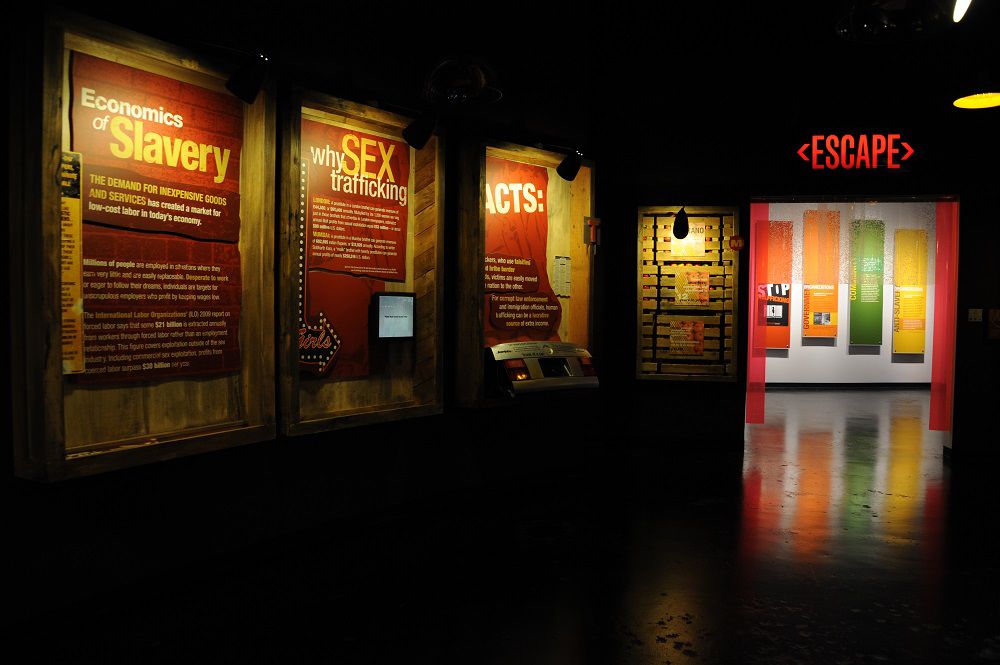
But she also does proactive outreach at schools, neighborhood groups and businesses, like restaurants, bars, hotels, even hair salons. She talks to employees and educates them on how to identify potential signs of human trafficking.
“We know this problem can’t be solved through arrests alone,” Johnson said. “Our goal is to help people identify the signs so if they see them, they can react quickly. Their reaction time may actually save a life.”
A common myth, Donato said, is that sex trafficking involves someone getting pulled into a white van by kidnappers or international smugglers catching someone at a border. But trafficking can also result from a parent, guardian, romantic partner or employer taking advantage of a person’s vulnerabilities.
“If you only are looking for those kidnapping type situations, you will not recognize it when it’s an abusive spouse forcing their partner to do something illegal or an employee who’s taking advantage of an employee,” Donato said.
Another misperception is that sex trafficking only happens to women, Johnson added. Human trafficking can happen to anyone who’s in a vulnerable position — women, children, men, nonbinary people, citizens and undocumented migrants.
The biggest thing they’re looking for, she said, is those who are vulnerable. That could mean they’re struggling with depression or domestic issues, or perhaps have a drug problem.
“Unfortunately, traffickers don’t discriminate,” Johnson said. “If they see a potential opportunity to make money off of someone, they’re going to do it.”
Immigrants are among the most vulnerable groups for trafficking, Talbott said. He especially noted those without documentation and/or who are poor or lack local connections.
Talbott gave a 2018 example where four people pleaded guilty in connection to a labor trafficking scheme involving Guatemalan nationals.

In that case, the traffickers encouraged the Guatemalans, including unaccompanied minors, to enter the U.S. illegally. They then coerced or threatened them and made them work on a farm in Marion, Ohio and kept them isolated at a trailer park.
The U.S. has “very clear and very strong laws” that protect victims of human trafficking, no matter where they’re from or whether they’re documented or undocumented, Talbott said. But despite those legal safeguards, there are still challenges that may keep some immigrants from wanting to come forward.
He cited things like changing sentiments on immigration in the U.S. and fears of being deported to “difficult situations” in their home countries as reasons they wouldn’t want to come forward. Those fears are stoked by the traffickers to keep them quiet, Talbott said.
“They come here with all those vulnerabilities. Unscrupulous people take advantage of them, the traffickers, and exploit them,” he said. “Once the person finds out they’re being exploited. Even if they realize they’re being exploited, they’re afraid to come forward.”
For Keown, it’s those type of harrowing realities taking place far away and close to home that make the battle against human trafficking so important.
“This is a horrible deplorable situation and people need to be aware of it so that they can do something about it,” he said. “We believe being informed and aware of what's going on is the most powerful weapon in driving necessary action and change.”
Those who believe they are a victim of human trafficking, or believe they know someone in danger can call the national human trafficking hotline at 1-888-373-7888. They can also text “HELP,” or “INFO” to 233733 anytime.





